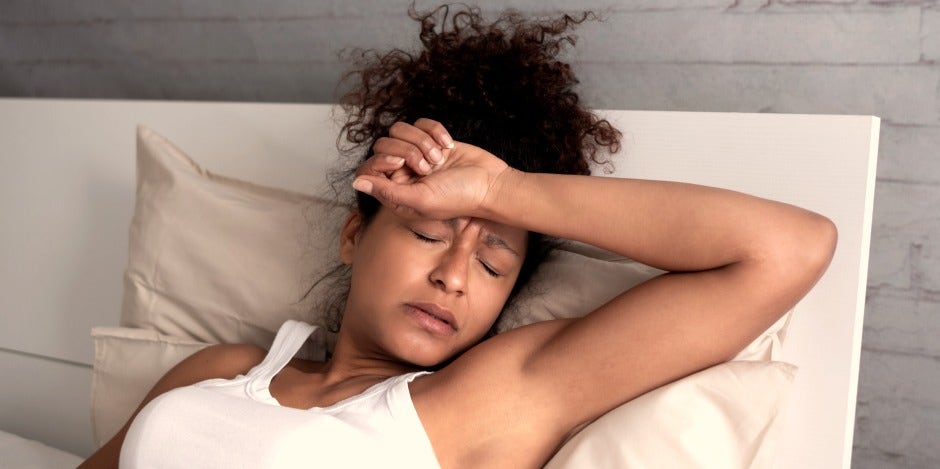What Does A Migraine Feel Like? How To Understand Chronic Pain & Have Empathy For Sufferers
The pain is crushing.
 getty
getty At the end of a long exhausting day, you feel like your head is going to burst.
You think you're having a migraine, and a few minutes of rest should do it.
Fortunately for you, that may not be a migraine at all, because it's so much worse.
What does a migraine feel like?
A migraine is more than just "a bad headache," says the Migraine Research Foundation.
It's actually "an extremely debilitating collection of neurological symptoms," and it varies from person to person.
What are the symptoms of migraines?
Migraine symptoms can progress through four stages — prodrome, aura, attack and post-drome — and may include the following features:
1. Prodrome:
Constipation, mood changes, food cravings, neck stiffness, increased thirst and urination, frequent yawning
2. Aura:
Visual phenomena, such as seeing various shapes, bright spots or flashes of light, vision loss, pins and needles sensations in an arm or leg, weakness or numbness in the face or one side of the body, difficulty speaking, hearing noises or music, uncontrollable jerking or other movements
3. Attack:
Pain usually on one side of your head, but often on both sides, pain that throbs or pulses, sensitivity to light, sound, and sometimes smell and touch, nausea and vomiting
4. Post-drome:
Feeling drained, confused, washed out, and/or elated, sudden head movements might bring on the pain again briefly
The symptoms are so bad that a survey by the Migraine Research Foundation found that 71 percent of sufferers would give up their favorite pair of jeans and 62 percent would give up social media if it meant that the migraines would stop.
To delve further into the phenomena of migraines, Excedrin, producer of a range of over-the-counter headache pain relievers, released The Migraine Experience.
This is an "augmented reality migraine simulator, to unlock a new level of understanding around migraines and the impact they have on the daily lives" of the 39 million migraine sufferers in the U.S. alone.
Excedrin commented on The Migraine Experience, saying:
"[This] is the first simulator designed to give non-sufferers the chance to safely experience symptoms of a migraine including disorientation, aura, sensitivity to light and blurred vision... We created The Migraine Experience to foster a new level of understanding between migraineurs and non-sufferers...
We're simulating the symptoms of a migraine — everything but the pain — because experiencing is believing.
Using technology to drive human emotion to help migraineurs feel better understood — allowing non-sufferers, for the first time, to see what it's like to have a migraine.'"
In the video, family and friends of sufferers decided to step in and experience what it truly feels like to have a migraine, minus the pain:
One woman describes it as "going blind," but, overall, it was an eye-opening experience for the family and friends of these sufferers, who truly had no idea what that felt like until they experienced it themselves.
This understanding raises awareness and empathy for those who suffer from this health issue, because, yes, it really is more than just a bad headache!
Once you understand what migraines feel like, you'll realize that the pain disrupts everyday life and makes simple tasks difficult to accomplish.
Caithlin Pena is a writer and editor for YourTango who enjoys books, movies, and writing fictional short stories as a hobby.

